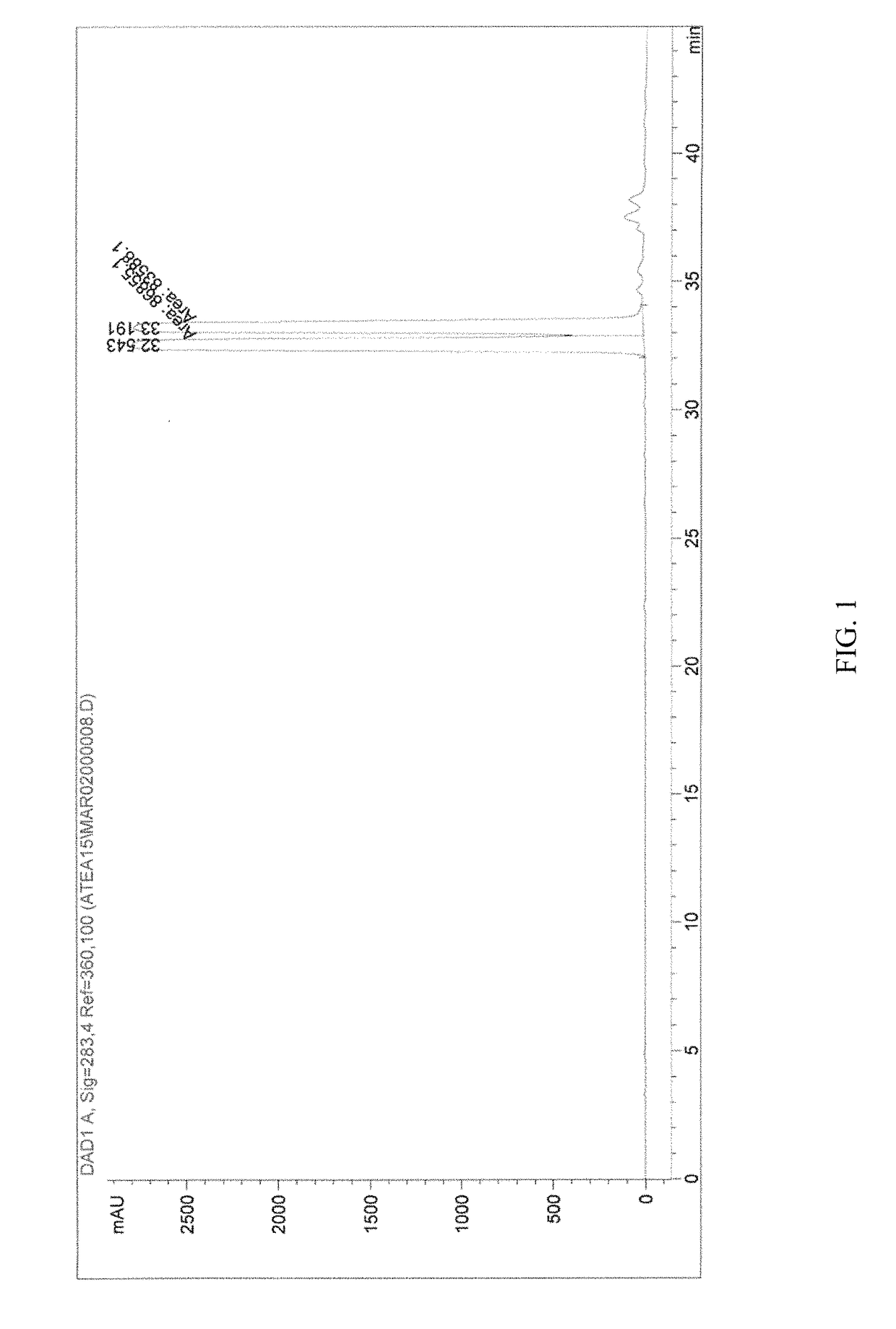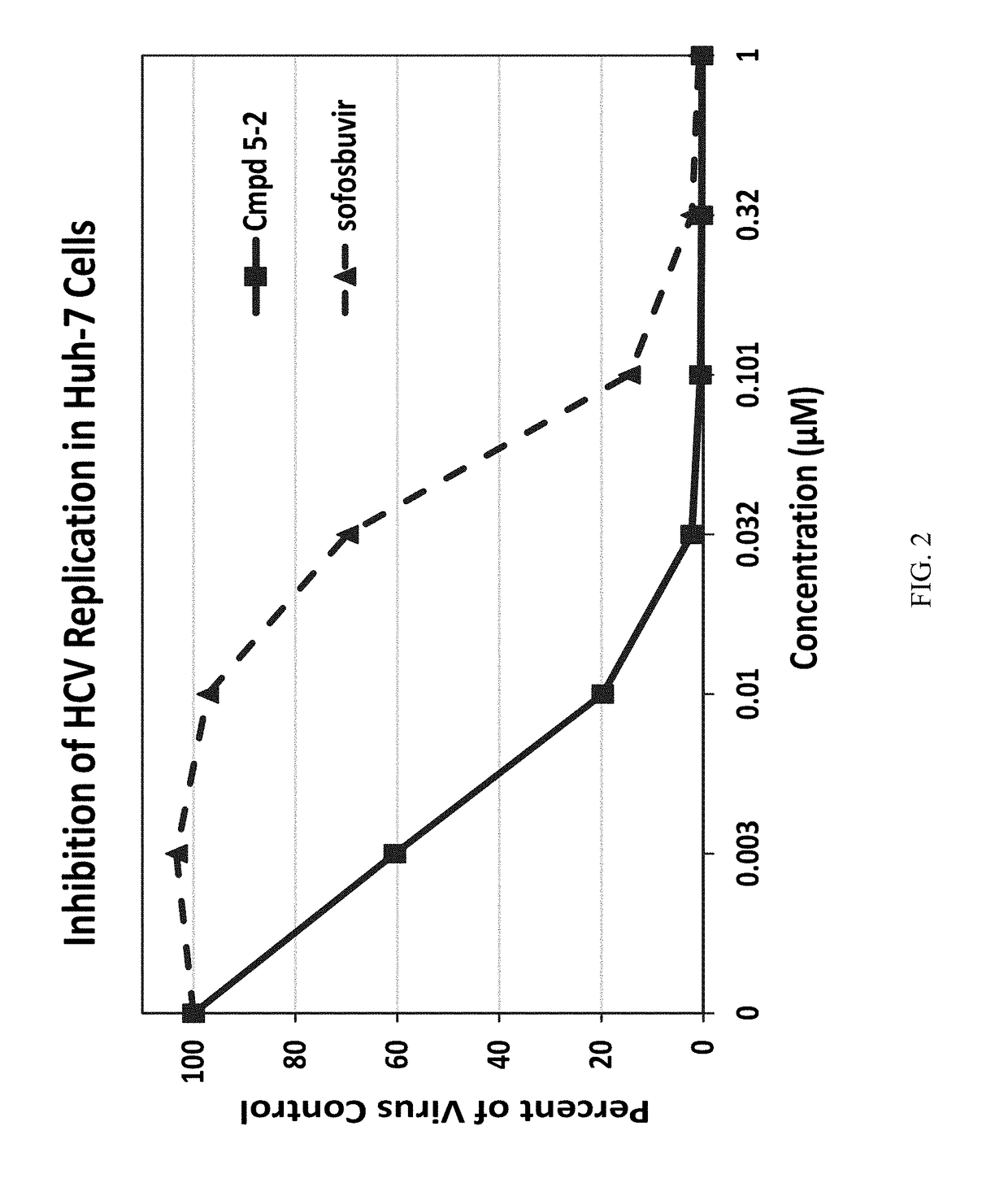β-D-2′-deoxy-2′-α-fluoro-2′-β-C-substituted-2-modified-N6-substituted purine nucleotides for HCV treatment
a technology of purine nucleotides and hcv, which is applied in the field of nucleotide compounds and compositions, can solve the problems of serious liver injury, liver failure, cirrhosis and liver cancer,
- Summary
- Abstract
- Description
- Claims
- Application Information
AI Technical Summary
Benefits of technology
Problems solved by technology
Method used
Image
Examples
embodiments
[0272]In particular embodiments:[0273](i) in Formula Ia, Y is NR1R2, R1 is methyl, R2 is hydrogen, R3 is hydrogen, R4 is a stabilized phosphate prodrug;[0274](ii) in Formula Ia, Y is NR1R2, R1 is methyl, R2 is hydrogen, R3 is hydrogen, and R4 is a stabilized thiophosphate prodrug;[0275](iii) in Formula Ia, Y is NR1R2, R1 is methyl, R2 is hydrogen, R3 is hydrogen, and R4 is a phosphoramidate;[0276](iv) in Formula Ia, Y is NR1R2, R1 is methyl, R2 is hydrogen, R3 is hydrogen, and R4 is a thiophosphoramidate:[0277](v) in Formula Ia, Y is NR1R2, R1 is methyl, R2 is hydrogen, R3 is hydrogen, and R4 is a monophosphate;[0278](vi) in Formula Ia, Y is NR1R2, R1 is methyl, R2 is hydrogen, R3 is hydrogen, and R4 is a diphosphate;[0279](vii) in Formula Ia, Y is NR1R2, R1 is methyl, R2 is hydrogen, R3 is hydrogen, and R4 is a triphosphate;[0280](viii) in Formula Ia, Y is NR1R2, R1 is methyl, R2 is methyl, R3 is hydrogen, R4 is a stabilized phosphate prodrug;[0281](ix) in Formula Ia, Y is NR1R2, R...
example 1
on of isopropyl ((((R,S)-(2R,3R,4R,5R)-5-(2-amino-6-(methylamino)-9H-purin-9-yl)-4-fluoro-3-hydroxy-4-methyltetrahydrofuran-2-yl)methoxy)-phenoxy-phosphoryl)-L-alaninate
Step 1. Preparation of ((2R,3R,4R,5R)-3-(benzoyloxy)-5-bromo-4-fluoro-4-methyltetrahydrofuran-2-yl)methyl benzoate (2)
[0545]To a solution of (2R)-3,5-di-O-benzoyl-2-fluoro-2-C-methyl-D-ribono-γ-lactone (24.8 g, 66.6 mmol) in dry THF (333 mL), under a nitrogen atmosphere and cooled to −30° C., was added lithium tri-tert-butoxyaluminum hydride (1.0 M in THF, 22.6 mL, 22.6 mmol) dropwise. After completion of the addition the reaction mixture was slowly warmed up to −15° C. over 90 min then EtOAc was added (300 mL) and the mixture was quenched with a saturated aq. NH4Cl solution (200 mL). The resulting solution was filtered on Celite® and the filtrate was extracted twice with EtOAc. The combined organics were dried (Na2SO4), filtered and concentrated. The residue was taken up in dry DCM (225 mL) under a nitrogen atmosphe...
example 2
on of isopropyl ((((R,S)-(2R,3R,4R,5R)-5-(2-Amino-6-(dimethylamino)-9H-purin-9-yl)-4-fluoro-3-hydroxy-4-methyltetrahydrofuran-2-yl)methoxy)-phenoxy-phosphoryl)-L-alaninate (7)
Step 1. Preparation of (2R,3R,4R,5R)-5-(2-amino-6-(dimethylamino)-9H-purin-9-yl)-4-fluoro-2-(hydroxymethyl)-4-methyltetrahydrofuran-3-ol (6)
[0554]To a solution of compound 3, from Example 1, (500 mg, 0.95 mmol) in MeOH (6 mL) was added dimethylamine hydrochloride (783 mg, 9.6 mmol) and 1,8-diazabicyclo[5.4.0]undec-7-ene (1.43 mL, 9.6 mmol). The reaction mixture was heated at 85° C. in a sealed tube for 6 h, cooled down to room temperature and concentrated. The residue was purified by column chromatography (gradient DCM / MeOH 100:0 to 85:15) then by reverse phase column chromatography (gradient H2O / MeOH 100:0 to 0:100) to afford product 6 (200 mg, 0.61 mmol, 64%) as a white solid.
[0555]1H NMR (300 MHz, CD3OD) δ 8.07 (s, 1H), 6.14 (d, J=18.1 Hz, 1H), 4.41 (dd, J=24.4, 9.2 Hz, 1H), 4.08-4.02 (m, 2H), 3.87 (dd, J=12...
PUM
| Property | Measurement | Unit |
|---|---|---|
| concentrations | aaaaa | aaaaa |
| concentrations | aaaaa | aaaaa |
| diameter | aaaaa | aaaaa |
Abstract
Description
Claims
Application Information
 Login to View More
Login to View More - R&D
- Intellectual Property
- Life Sciences
- Materials
- Tech Scout
- Unparalleled Data Quality
- Higher Quality Content
- 60% Fewer Hallucinations
Browse by: Latest US Patents, China's latest patents, Technical Efficacy Thesaurus, Application Domain, Technology Topic, Popular Technical Reports.
© 2025 PatSnap. All rights reserved.Legal|Privacy policy|Modern Slavery Act Transparency Statement|Sitemap|About US| Contact US: help@patsnap.com



